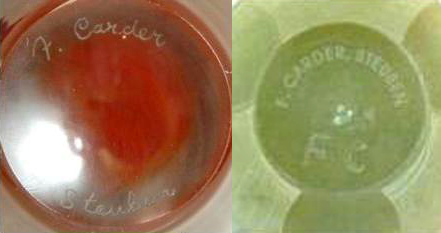Steuben Signatures and Forgeries
This section shows most of the signatures or marks that Steuben used during the Carder era. There is also a section that shows a selection of some of the forged Steuben signatures that are sometimes seen.
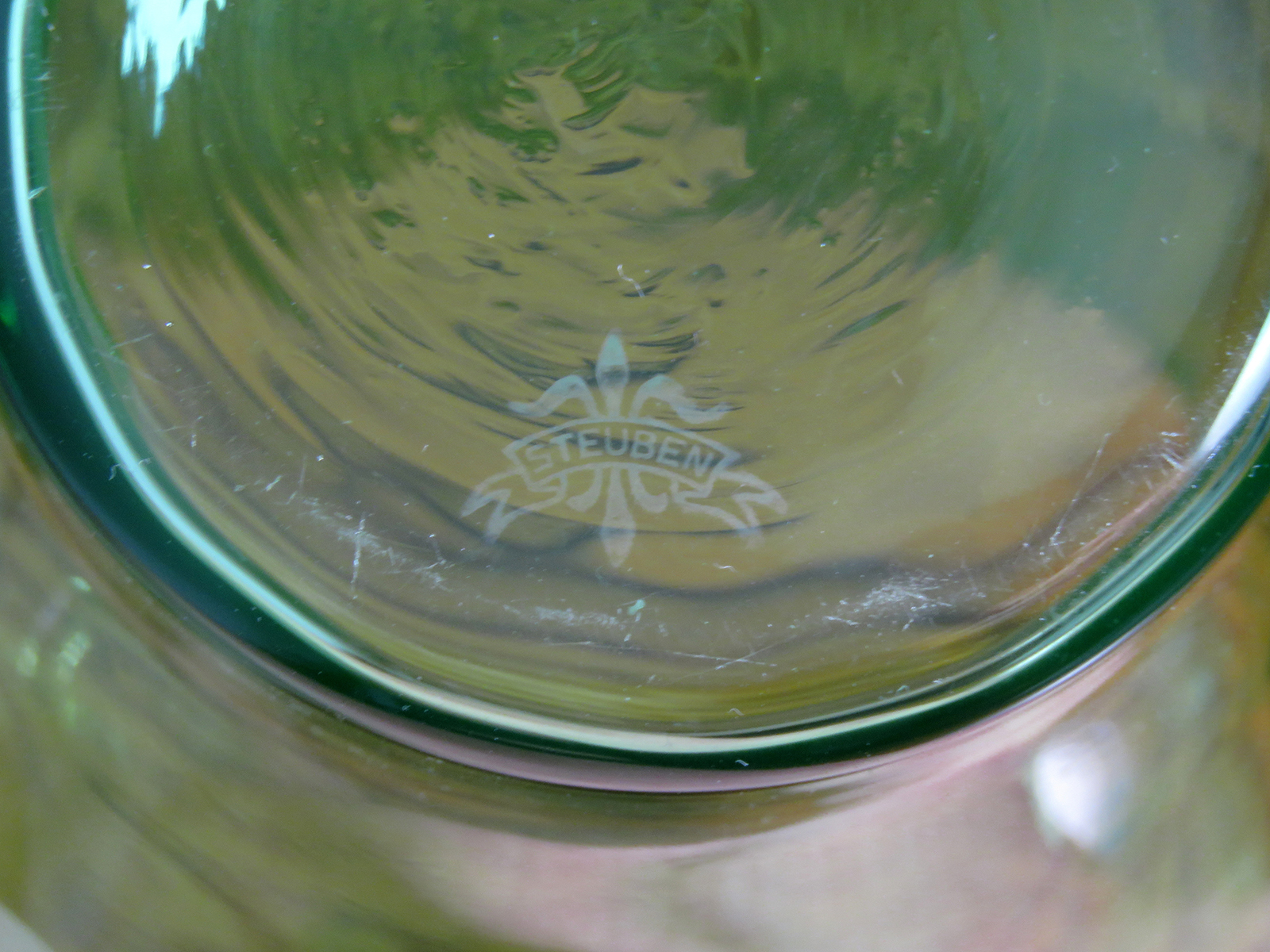
Acid Etched Fleur de lis
The acid etched Fleur-de-lis signature was used over the whole Carder era from 1903 until 1933.
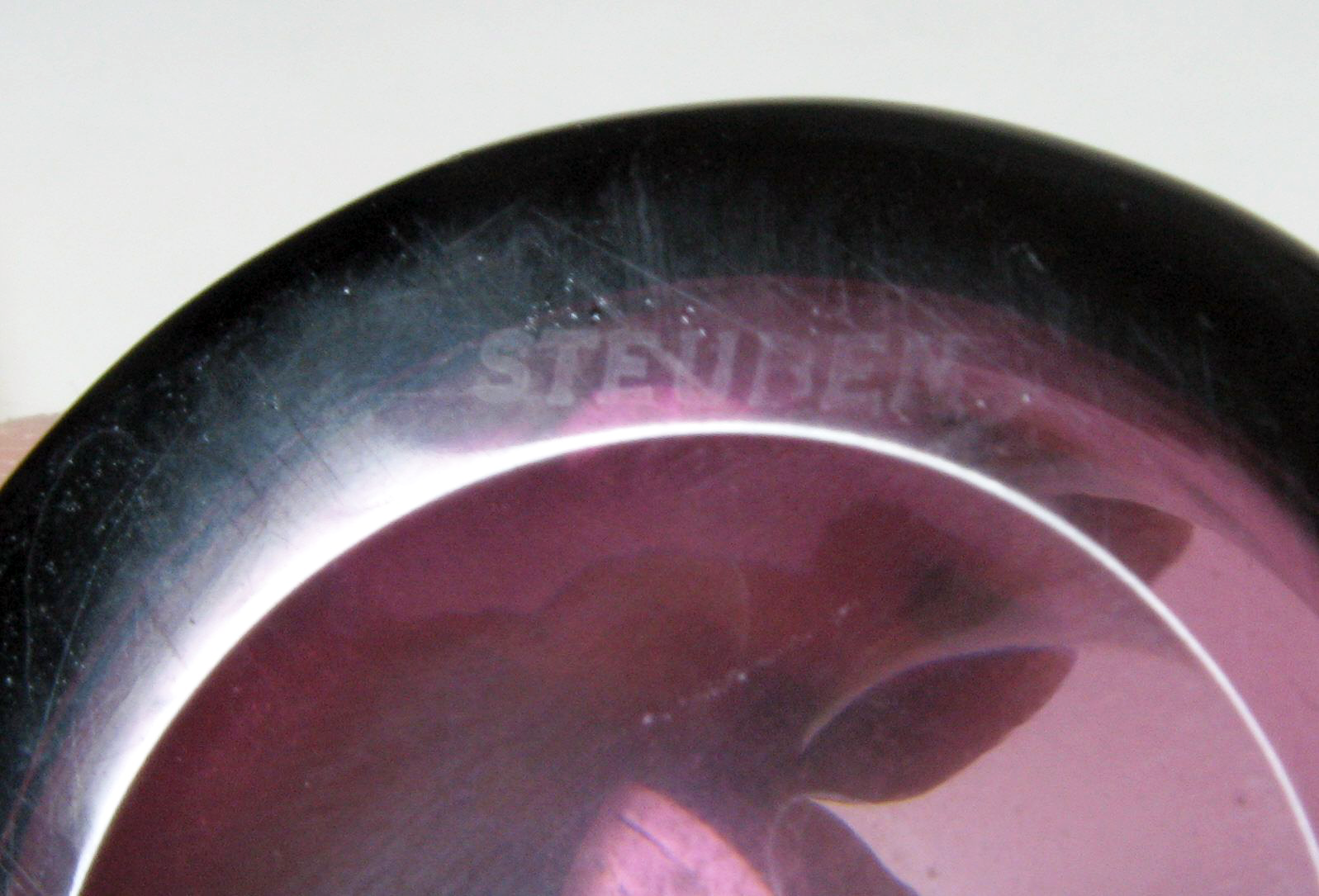
Block Letter Signature
The block letter signature was used over the whole Carder era from 1903 until 1933.
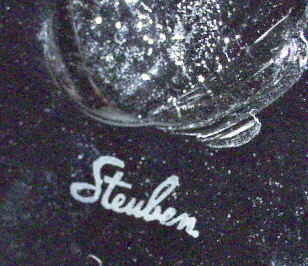
Script Acid Etched
The script acid etched signature was used from about 1928 to 1932.
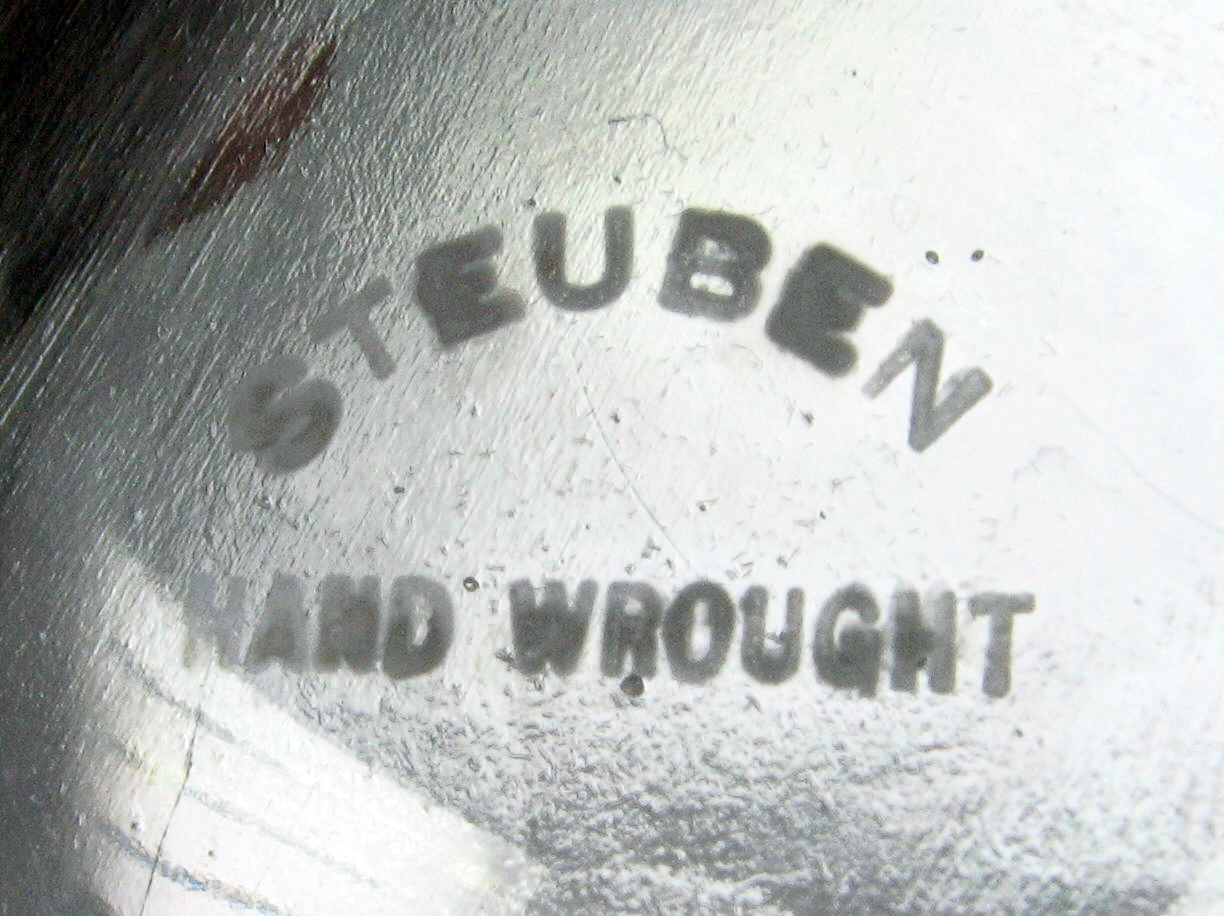
Hand Wrought
The Hand Wrought signature is quite rare and is usually found on colorless glass that is often engraved. It is usually found on Steuben with shapes numbers larger than about 6000.
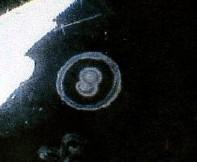
Acid Etched S in a Circle
This acid etched signature is not seen often. Do not mistake the acid etched Sinclaire S in a wreath signature for this one.
Aurene Signatures
The Aurene signature was engraved. Early Aurene signatures were usually just “Aurene” with the shape number. Later the engraving was “Steuben Aurene” and included the shape number. Toward the end of the Carder era the signatures were often just “Steuben” and may or may not include the shape number. The change over from “Aurene” to “Steuben Aurene” seems to have taken place about the time Steuben was acquired by Corning Glass in 1917. It should be noted that pieces with an early shape number could have either type of signature depending upon when it was actually made.
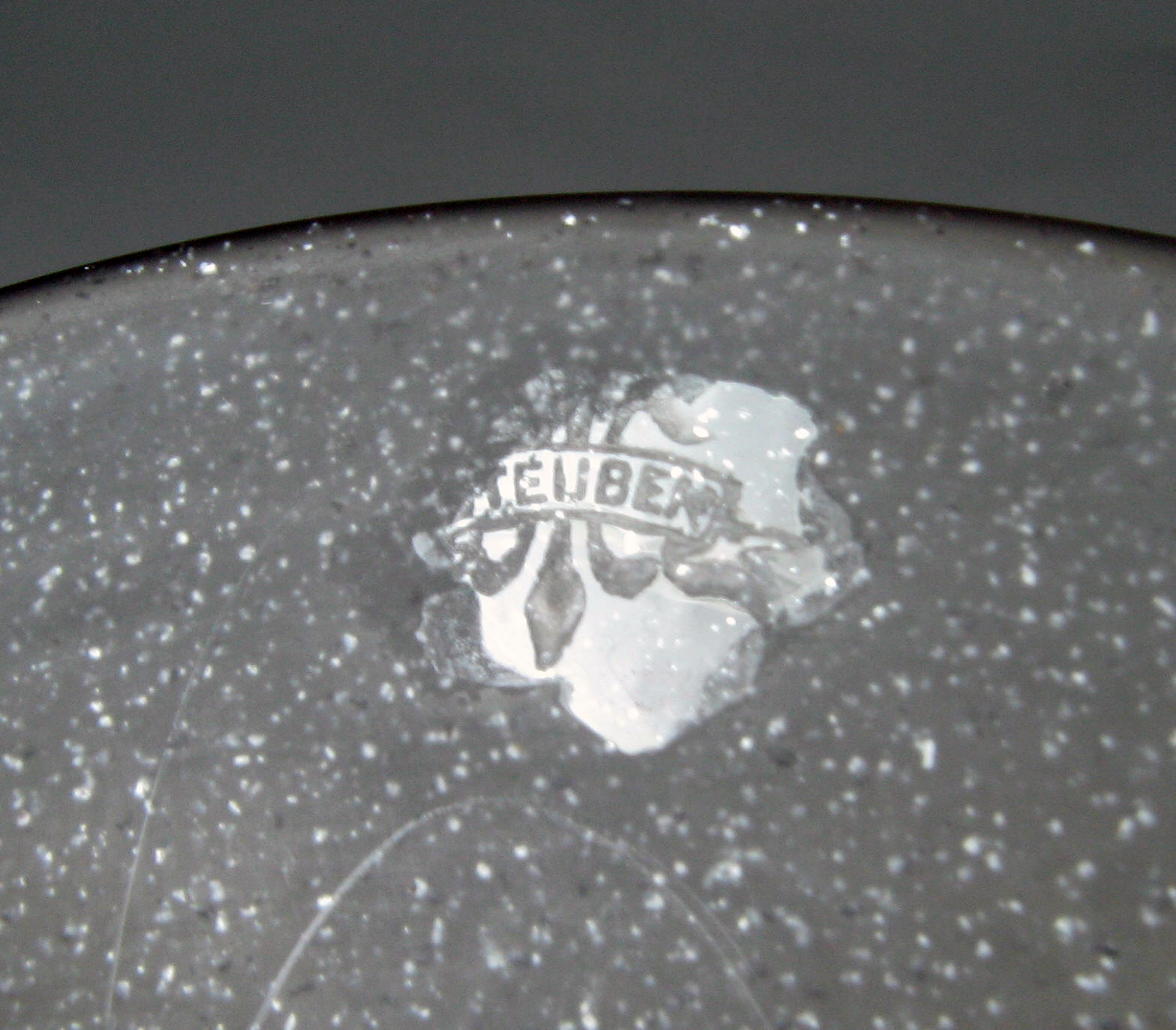
Fleur-de-lis on matte finish
When the acid etched Fleur-de-lis is used on glass with a matte finish a spot on the glass is often chemically polished before the Fleur-de-lis is applied. The signature shown here is on a Florentia candlestick.

Fleur-de-lis on an acid etched piece
Acid Etched Steuben pieces could be signed in various ways. The more common acid etched signatures were often used. In addition sometimes the Fleur-de-lis was included as a part of the etched pattern. When this was done the signature was usually located low on the side of the piece, not on the bottom.
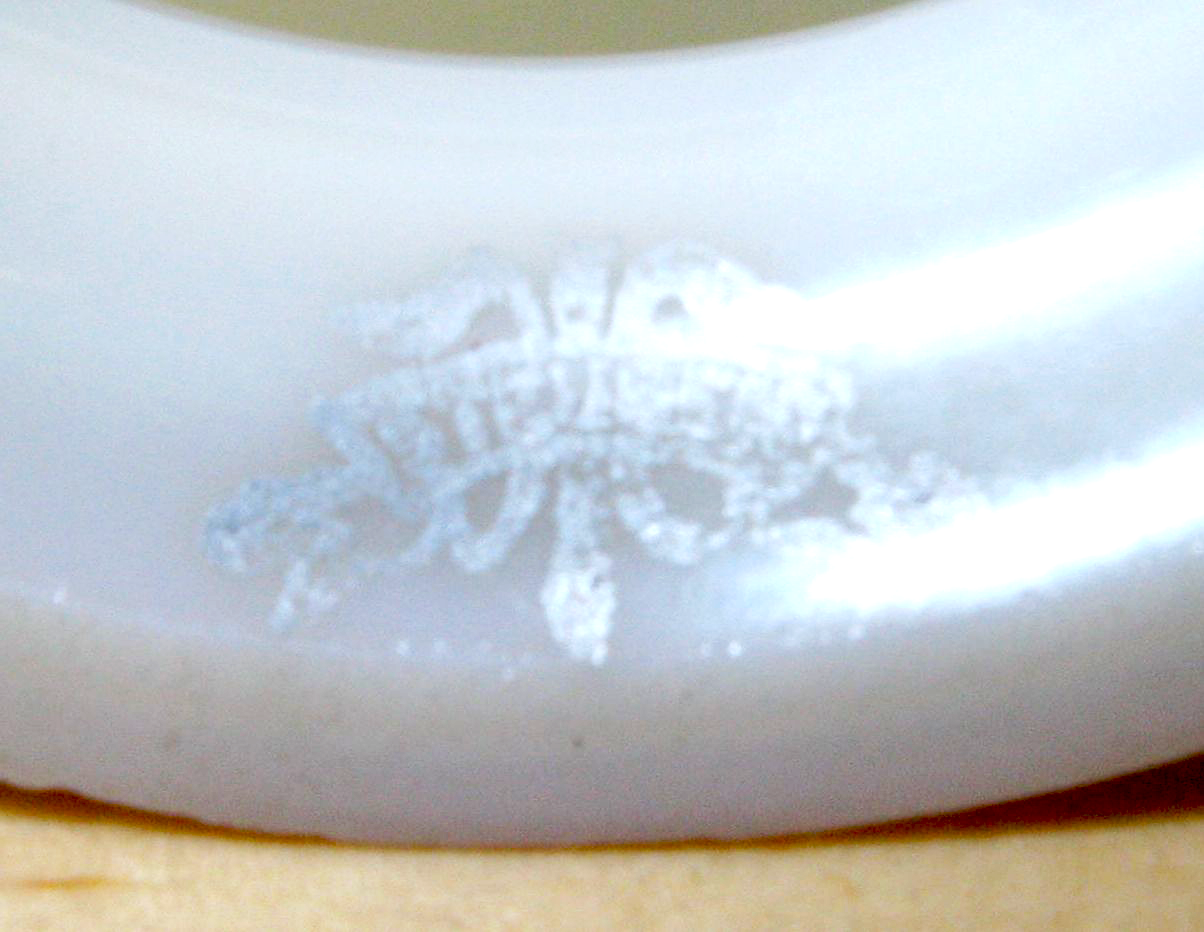
Fleur-de-lis on a lamp shade
The Fleur-de-lis signature is often used on the fitter rim of a lamp shade. It is an aluminum ink and is stamped on the glass. This type of signature was easily damaged or washed off.
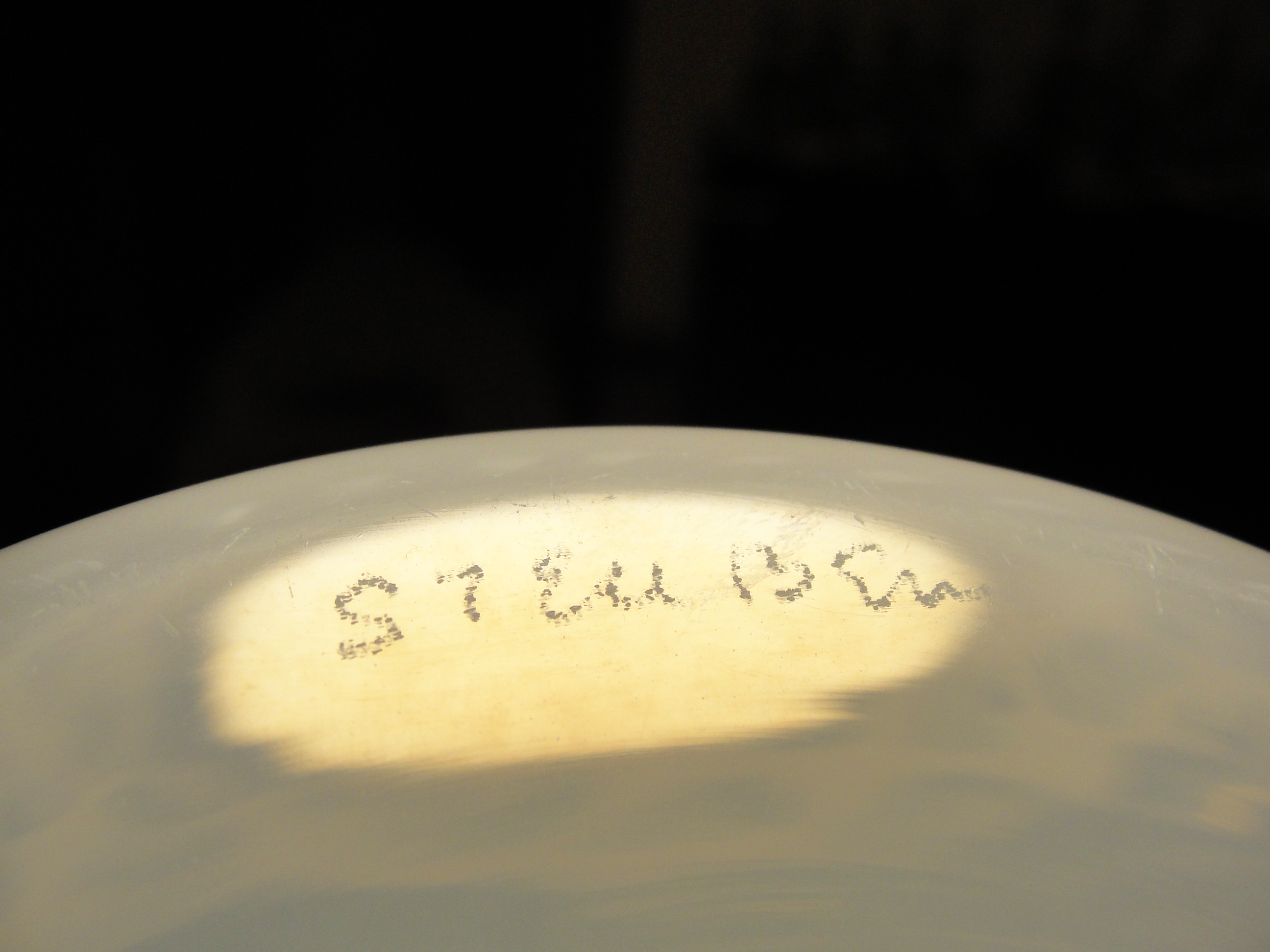
Signatures on Ivrene
When Ivrene was signed it was signed with an engraved “Steuben”. Acid etched signatures will not be found on Ivrene.
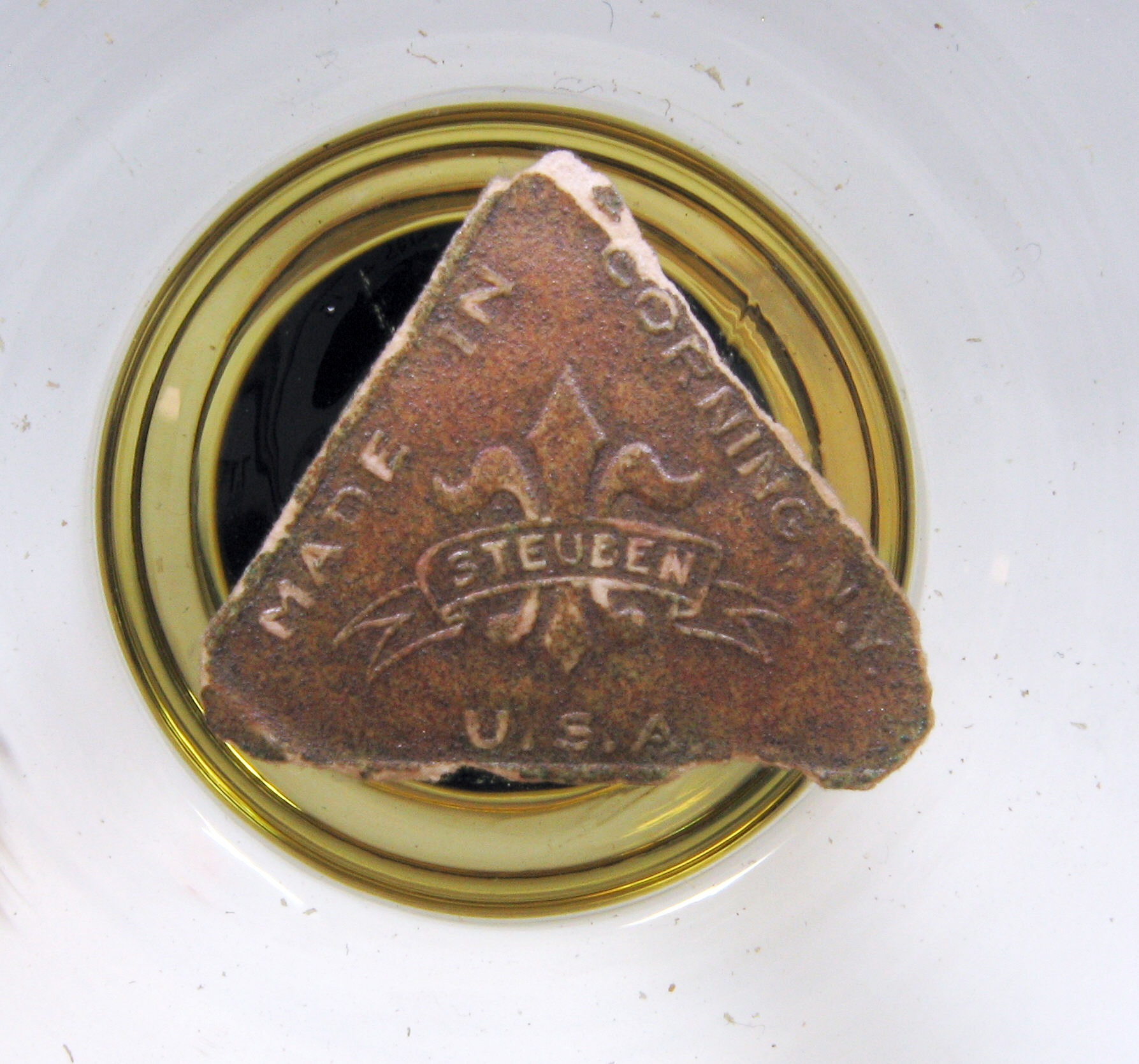
Fleur-de-lis paper label
A number of paper labels were used on Steuben. The most common was a gold triangular label shown here. Paper labels were easily washed off over the years and are not particularly common now.
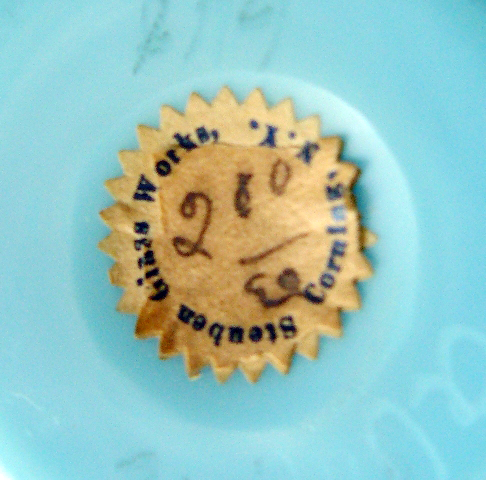
Round Serrated Paper Label
This paper label was common. It was often used as a price tag.
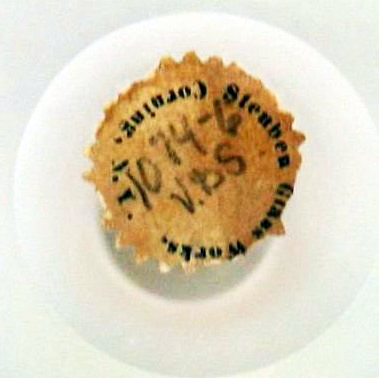
Round Serrated Paper Label
This label is being used to identify the glass. The 1074 is the shape number and the 6 is the height in inches. Below the number is V.D.S. which describes the glass.
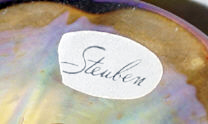
Oval Paper Label
This is an example of an oval paper label with the script signature.
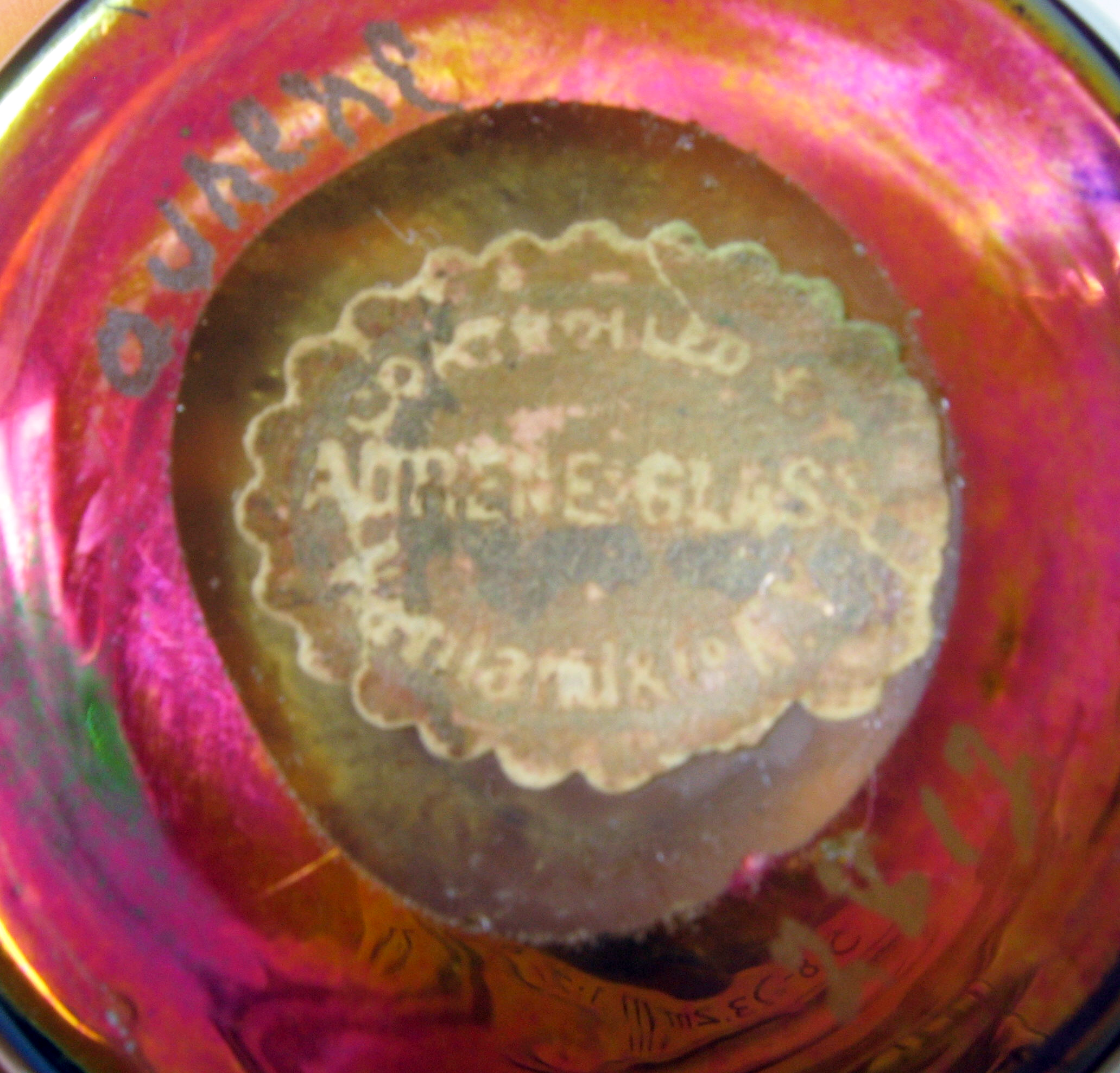
Haviland Paper Label
A paper label that is now rare was used on some pieces of Steuben that were sold to Haviland & Co. The label says “AURENEGLASS” though the center. In an arc across the top it says “Controlled By” and in a arc across the bottom “Haviland & Co. NY”. Steuben made glass for Haviland from about 1910 to 1915.
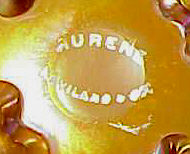
Stamped Haviland Signature
A more common Haviland signature is paint stamped. The material is similar to the ink used on shades and is easily washed off. These signatures were used from about 1910 to 1915.
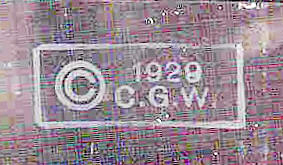
Corning Glass Works trademark
Steuben sometimes used a Corning Glass Works acid etched mark on products such as luminors and plaques. The Edison plaque will often be found with this mark.
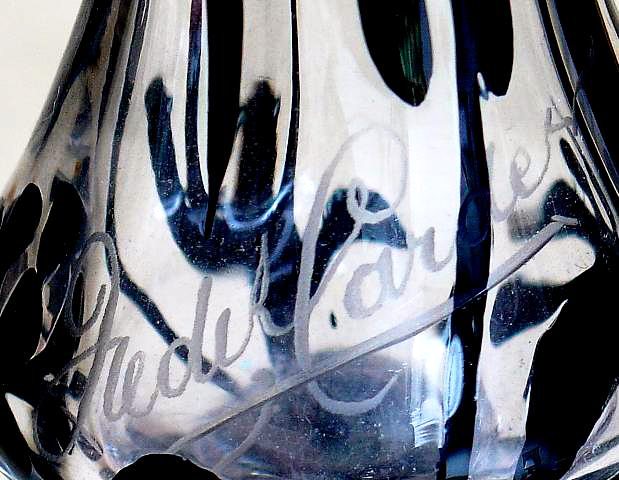
Frederick Carder Engraved Signature used on Intarsia
A special engraved signature was used on Intarsia and a few other rare pieces. It was applied as a part of the production process and Mr. Carder did not engrave the signature himself. This signature is also moderately easy to forge.
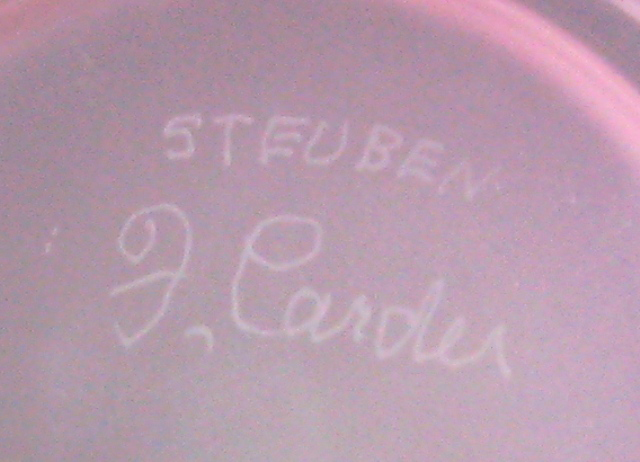
Frederick Carder Engraved Signature
After Frederick Carder retired collectors would sometimes bring him a piece to authenticate. When he did so he would often sign the piece using an hand held motor driven engraving tool. If the piece were an Aurene he would sign it “Aurene F. Carder” and if the piece were other than an Aurene he would sign it “Steuben F. Carder”. Note that this signature is fairly easy to forge.
This PDF shows the history of Steuben signatures from about 1929 to 2009. It covers most of the post Carder era. It may not be complete since it is known that the standard Carder acid etched signatures and the acid etched script signature were used during the 1929 to 1932 period.
This is the signature used by Schottenstein after they acquired Steuben in 2008-2009. It was used until Steuben production stopped in 2011.
FORGED STEUBEN SIGNATURES
This section shows a number of forged Steuben signatures that have been seen on glass. These forged signatures are very common. Authenticating Steuben is a process and a Steuben signature on a piece of glass is worthless, by itself, for authentication.
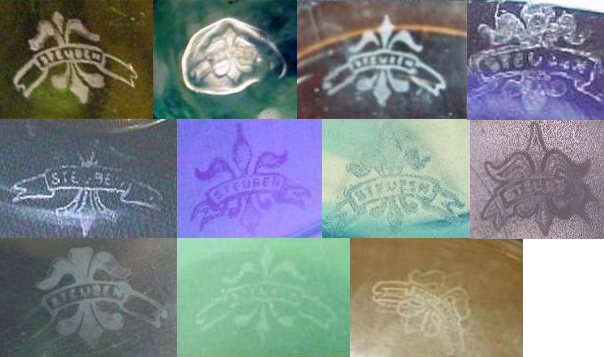
Forged Fleur-de-lis Signatures
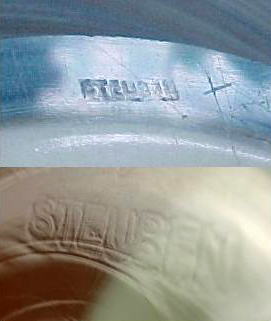
Forged Block Letter Signatures
